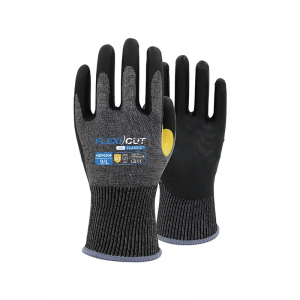For industries where hand protection is critical, choosing the right cut-resistant gloves is a critical decision. With the many options available, understanding the key factors can help businesses make informed decisions when selecting the most suitable gloves to ensure worker safety and performance.
One of the main considerations when choosing cut-resistant gloves is the level of protection required. Cut-resistant gloves are rated according to standardized testing methods, such as the ANSI/ISEA Cut Resistance Rating, which classifies gloves into different levels of protection. Understanding the specific hazards and risks in the work environment (such as sharp objects, blades, or machinery) is critical to determining the appropriate level of cut protection needed to prevent potential injury.
The material composition and construction of the glove are also key factors to consider. Different materials, such as Kevlar, Dyneema or high-performance fibers such as stainless steel mesh, offer varying degrees of cut resistance, flexibility and comfort. Evaluating specific job tasks and ergonomic requirements can help select gloves that strike the right balance between protection and flexibility to ensure optimal performance and user comfort.
Additionally, the fit and size of the glove play an important role in its effectiveness. Gloves that are too loose or too tight will affect flexibility and protection. Ensuring proper fit and ergonomics enhances the overall user experience and encourages compliance with safety protocols.
Additionally, when selecting cut-resistant gloves, it is important to consider factors such as grip, abrasion resistance, and compatibility with other personal protective equipment (PPE). Features like a textured palm, reinforced fingertips and touchscreen compatibility help improve grip and versatility in a variety of work environments.
By carefully considering these key factors, businesses can make informed decisions when selecting the right cut-resistant gloves to ensure worker safety and job performance, ultimately reducing the risk of hand injuries and maintaining a safe work environment.

Post time: Mar-28-2024


